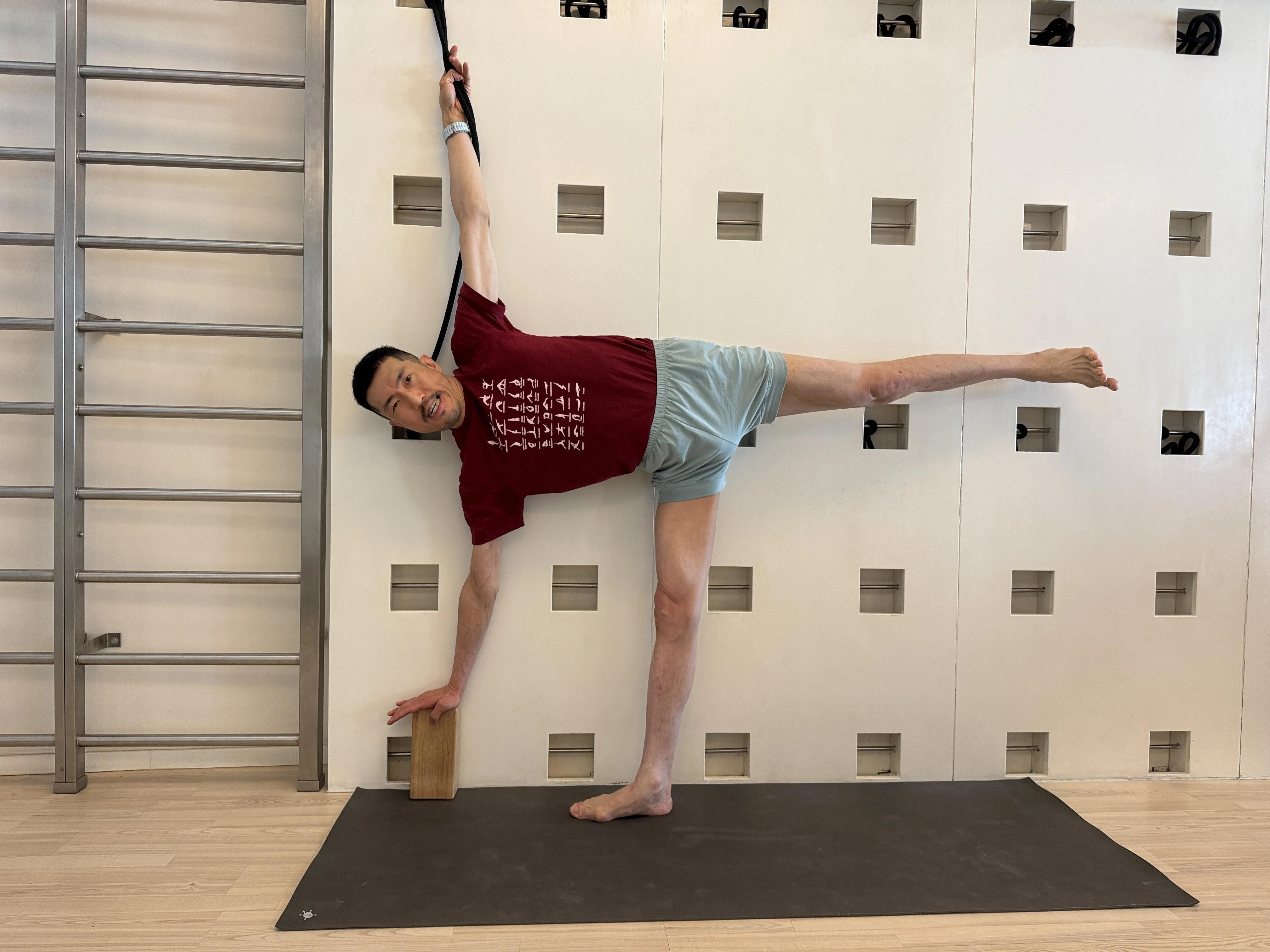Copyright scmp

When David Lee first stumbled on the street in Hong Kong seven years ago, unable to walk in a straight line, he had no idea it was an early sign of a rare neurological disorder that would change his life forever. He was diagnosed with spinocerebellar ataxia type 3 (SCA3) in May 2022, two months after losing his mother to Covid-19. His ensuing journey from uncertainty to resilience is a testament to the power of determination, unwavering support and yoga. SCA3 is an inherited, progressive, neurodegenerative disorder that affects muscle control, leading to problems with coordination, balance and movement. Lee, a 52-year-old mutual fund executive, was 45 when his symptoms first surfaced in 2018. “I had a few unpredictable falls. One day, while walking on the street, I fell flat. I also began having difficulties with my speech,” he says. “The muscles near my vocal cords became very tight, and my voice would be off, flat, without any pitch.” It took the doctors four years to diagnose the disease. “They thought it could be ataxia [poor muscle control that causes clumsy movements] caused by alcohol consumption or liver cancer,” he says. He had countless blood tests, MRI scans and ultrasound scans, and was eventually diagnosed with SCA3 through genetic tests. Initially, Lee found it hard to accept his prognosis. “When the doctor told me I had SCA3, I was in shock. I had not been able to process the loss of my mother, and it took a few months for the news of the disease to sink in,” he says. To manage the condition, he has weekly physiotherapy and speech therapy sessions. Lee has also overhauled his lifestyle over the past few years, giving up harmful habits. He quit alcohol in 2021 at his doctor’s urging, the year before his diagnosis. “I drank a bottle of red wine or a few glasses of beer or cocktails every day on my own or with friends. My neurologist told me that there was a chance that I may have SCA3 and that there was a chance it would impact my balance and make it a lot worse.” He had successfully kicked a 20-year habit of smoking a pack of cigarettes a day in 2016, using nicotine patches and gum. “Quitting smoking was more psychological than physical,” he says. “My mother and wife constantly nagged me about it. I reached a point where I realised I had smoked for too long and it was time to quit.” The game-changer for Lee in dealing with SCA3 has been adopting regular yoga practice. His wife, Koty, introduced him to Iyengar yoga, named after the late yoga guru B.K.S. Iyengar, after she took a few classes at the Iyengar Yoga Centre of Hong Kong in August 2024. “I filled in an online questionnaire and joined the [twice-weekly specific needs] class the same month. That was the best decision I made,” Lee says. The specific needs class is for students with injuries, ailments or special conditions, says George Dovas, the head of the centre. They practise under a teacher’s supervision. “Special attention is given to the student’s particular health challenge. A personalised sequence can be created for a range of problems from shoulder pain to frozen joints to neurological issues like David’s,” Dovas says. The Iyengar principles – alignment, sequencing, timing and the focus on the intricacy of each pose – form the framework for the practice. Instructors adjust poses to ensure that students’ bodies are supported, not strained. The use of props such as blankets, blocks and belts helps adapt a pose, allowing a student with an injury or condition to safely access its full therapeutic benefits. Instructors control the order of postures and how long each posture is held. This helps students soothe or stimulate their nervous system, build targeted strength or improve their range of motion. For Lee, a quote from B.K.S. Iyengar resonates deeply: “Yoga teaches us to cure what need not be endured and endure what cannot be cured.” Lee knows he cannot reverse the deterioration in his balance and coordination or his speech impairment. “But by practising Iyengar yoga, I have learned to harness my body in new ways, building strength, flexibility and control,” he says. “I can control my body and know how to use it better. I feel happy, energised and hopeful after each class. That feeling is priceless.” Dovas explains how the poses help Lee. “The cerebellum, a part of the brain where nerve cells degenerate in someone with SCA3, is responsible for balance and also coordinating voluntary movements,” he says. Having Lee practise standing poses such as trikonasana (the triangle pose) and ardha chandrasana (the half-moon pose) challenges his balance. “When he is in the pose, we give him numerous instructions asking him to carry out movements such as spreading his fingers, triggering activity in the cerebellum. “To keep David’s brain stimulated, we do the same pose in different ways; for instance, one day facing the trestle, another day facing away from the trestle. This makes a noticeable difference in how the nervous system and brain negotiate balance.” Dovas also has Lee practise inverted postures such as salamba sarvangasana (shoulder stand) and salamba sirsasana (headstand). “In these poses, the body is upside down, stimulating the cerebellum,” Dovas says. This routine has enabled Lee to develop a greater sense of awareness and control over his body. “Strikingly, he has been able to do things he thought were impossible,” Dovas says. “For instance, when he first came to class, he was not able to have his head lower than his trunk without feeling dizzy. He is now able to hang completely inverted in rope sirsasana.” Lee confirms that after eight months of practice, he can do assisted inversions without feeling dizzy. His mindset has also changed; his thinking has become more practical, and he is much more optimistic. “At one point, I did not like my body. I was angry at having this disease. Over time, I have learned to love and accept myself,” says Lee, who continues to enjoy travelling, going to concerts and films, meeting friends and singing karaoke. “I still work with the same firm, from home now, and try to strike a balance between work, rehabilitation and personal interests. I don’t want to regret not using my time to stay as happy and healthy as possible.” Lee says his wife and friends have been his biggest supporters. “Koty is an excellent planner who created a holistic treatment and rehabilitation schedule for me, [and provides] emotional support. “My therapists and teachers, whom I met along my rehabilitation journey, have been incredible,” he says. Lee’s advice for others facing setbacks and challenges is simple: “Carpe diem. Seize the day!” He has taken this advice to heart himself. “There is no cure for SCA3 as of now. My condition will deteriorate, but I will try my best to live with it and slow down the progress with a holistic approach, including Iyengar yoga,” he says. “I hope there will be medicines to control and even cure this disease in the near future. Until then, life must go on.” Like what you read? Follow SCMP Lifestyle on Facebook, X and Instagram. You can also sign up for our eNewsletter here.



